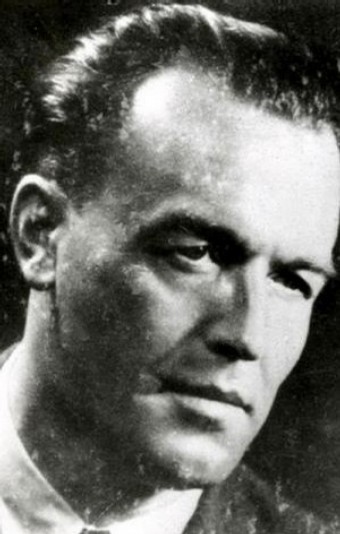 It has taken me some time to get a handle on that recent New York Times feature that ran with the headline, "Uncovering Lost Path of the Most Wanted Nazi" by Souad Mekhennet and Nicholas Kulish.
So here is what I think: It's an absolutely brilliant story with a giant religion ghost hiding in its soul. In this case, the "ghost" isn't a absence of religion, and and of itself. It's a less than that, and much more.
It has taken me some time to get a handle on that recent New York Times feature that ran with the headline, "Uncovering Lost Path of the Most Wanted Nazi" by Souad Mekhennet and Nicholas Kulish.
So here is what I think: It's an absolutely brilliant story with a giant religion ghost hiding in its soul. In this case, the "ghost" isn't a absence of religion, and and of itself. It's a less than that, and much more.
This feature tells the story of how the infamous Nazi known as "Dr. Death" escaped the law and managed to hide for decades, until his death in 1992. The religion twist is right in the lengthy, descriptive feature lede.
CAIRO -- Even in old age the imposingly tall, athletic German known to locals as Tarek Hussein Farid maintained the discipline to walk some 15 miles each day through the busy streets of Egypt's capital. He walked to the world-renowned Al Azhar mosque here, where he converted to Islam, and to the ornate J. Groppi Cafe downtown, where he ordered the chocolate cakes he sent to friends and bought the bonbons he gave to their children, who called him Uncle Tarek.
Friends and acquaintances here in Egypt also remember him as an avid amateur photographer who almost always wore a camera around his neck, but never allowed himself to be photographed. And with good reason: Uncle Tarek was born Aribert Ferdinand Heim, a member of Hitler's elite Waffen-SS and a medical doctor at the Buchenwald, Sachsenhausen and Mauthausen concentration camps.
What did Heim do to earn the "Dr. Death" label?
Dr. Heim was accused of performing operations on prisoners without anesthesia; removing organs from healthy inmates, then leaving them to die on the operating table; injecting poison, including gasoline, into the hearts of others; and taking the skull of at least one victim as a souvenir. After living below the radar of Nazi hunters for more than a decade after World War II -- much of it in the German spa town of Baden-Baden where he had a wife, two sons and a medical practice as a gynecologist -- he escaped capture just as investigators closed in on him in 1962.
The infamous demon fled to the safety of the Arab world, where he lived a careful life with a circle of close friends who, it seems, did not know who he was. The story makes it clear that his conversion to Islam was more than a sham. It was part of his new life. He was a student of the Koran, apparently in German and Arabic.
But there is the ghost: Did this faith change him in any way or was it merely another way to reject the Jews and the consequences of his deeds? How does his new faith connect with the rest of the story. We simply do not know. When the Times introduces a son who continued to correspond with his father, this question remains -- or so it seems -- unasked. Perhaps no one knew the answer.
The details of Heim's life, escape and life in hiding are riveting in and of themselves. Trust me. And I must stress, again, that the mere fact that he converted to Islam is central to the story.
A certified copy of a death certificate obtained from Egyptian authorities confirmed witness accounts that the man called Tarek Hussein Farid died in 1992. "Tarek Hussein Farid is the name my father took when he converted to Islam," said his son Rudiger Heim. In an interview in the family's villa in Baden-Baden, Mr. Heim, 53, admitted publicly for the first time that he was with his father in Egypt at the time of his death from rectal cancer.
 Finally, we reach the part of the story that is most haunting -- for those who want to know if anything ever changed in the heart and mind of this criminal.
Finally, we reach the part of the story that is most haunting -- for those who want to know if anything ever changed in the heart and mind of this criminal.
You see, he did not think that he was the real criminal. Is this one reason that he fled into the Arab world? Was Egypt a natural home? Here is the key material, in context:
According to his son, Dr. Heim had left Germany and driven through France and Spain before crossing into Morocco, and eventually settling in Egypt. "It was only sheer coincidence that the police could not arrest me because I was not at home at the time," Dr. Heim wrote in a letter to the German magazine Spiegel, after it published a report about his war-crimes case in 1979. It is unclear whether he ever sent the letter, which was found in his files, many of which were written in meticulous cursive style in German or English.
In the letter he also accused Simon Wiesenthal, who was interned at Mauthausen, of being "the one who invented these atrocities." Dr. Heim went on to discuss what he called Israeli massacres of Palestinians, and added that "the Jewish Khazar, Zionist lobby of the U.S. were the first ones who in 1933 declared war against Hitler's Germany."
The Turkic ethnic group the Khazars were a recurring theme for Dr. Heim, who kept himself busy in Cairo, researching a paper he wrote in English and German, decrying the possibility of anti-Semitism owing to the fact, he said, that most Jews were not Semitic in ethnic origin. (Tarek Abdelmoneim el Rifai) recalled that Dr. Heim had shown his family many different drafts of the paper, which were among the papers found in the briefcase that The Times and ZDF television obtained. A list also showed plans to send drafts of the paper to prominent people around the world -- under the name Dr. Youssef Ibrahim -- including the United Nations secretary general, Kurt Waldheim, the United States national security adviser, Zbigniew Brzezinski, and Yugoslavia's leader, Marshal Tito.
But was the conversion to Islam sincere? Was it complete? The reporters end with one telling detail, as seen through the eyes of Mahmoud Doma, whose love of the man the family called "Uncle Tarek" is expressed in a simple phrase: "He was like a father."
That leads to one conflict between Heim's new life and the old:
After his death, his son Rudiger insisted that they follow his father's wishes and donate the body to science, not an easy task in a Muslim country where the rules dictate a swift burial and dissection is opposed. Mr. Doma, who wanted to put Uncle Tarek in the family crypt next to his father, opposed the plan.
The two men rode in a white van with the body of Dr. Heim, which had been washed and wrapped in a white sheet in accordance with Muslim tradition and placed in a wooden coffin. Mr. Doma said they bribed a hospital functionary to take the body, but Egyptian authorities found out, and Dr. Heim was instead interred in a common grave, anonymously.
Read it all. Do you see the ghost?
Did anyone know the role that Heim's faith played in his new life? Did anyone ask?
